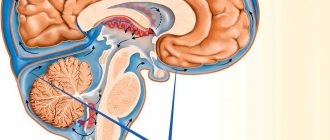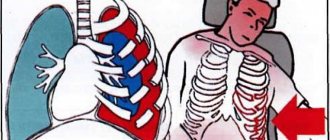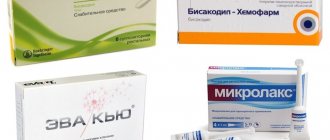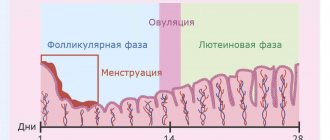Infectious disease specialist
Sinitsyn
Olga Valentinovna
33 years of experience
Highest qualification category of infectious disease doctor
Make an appointment
HIV (human immunodeficiency virus) is a virus that attacks the body's immune system. More precisely, it targets certain immune cells and kills them. The longer and more active this process lasts, the weaker the immune system becomes - over time, it is simply unable to cope even with infections that are relatively safe for an ordinary person.
HIV and AIDS - differences, duration of development, forecasts
AIDS is the final stage of HIV, which is characterized by severely reduced immunity. It is important not to confuse these two concepts. From the moment of HIV infection, the disease can develop to the AIDS stage without treatment within 9-11 years (on average). Once diagnosed with AIDS without treatment, life expectancy is short - on average up to 19 months.
If you start treatment on time, you can live a very long life at the HIV stage - the life expectancy of such patients thanks to modern treatment is 20-50 years. And although at the AIDS stage the situation is much more complicated, many patients, with proper treatment and a strong body, can live more than 10 years.
It is obvious that taking therapy is the most important factor for treating HIV and living a full, long life. Moreover, it is treatment that can significantly reduce the viral load and make the infected person harmless to the partner, as well as family members.
Routes of HIV transmission
Main routes of HIV infection:
- unprotected sex with an infected person (the most common route of HIV transmission). You can become infected either after a single contact or after several;
- using a needle to inject drugs after an infected person. Or other variants of situations in which the blood of a healthy person comes into contact with the blood of an infected person;
- transmission from mother to fetus during childbirth or from mother to child during breastfeeding. An important note: if a woman is treated and is under the supervision of doctors, she has every chance of giving birth to a healthy baby;
- transfusion of infected blood. In modern clinics and hospitals this is no longer possible, since all materials undergo very serious testing.
There are also so-called risk groups - these are people who are more susceptible to HIV infection than others:
- people who are promiscuous;
- homosexuals;
- drug addicts who inject drugs;
- people with a partner infected with the virus.
Such people should constantly get tested. In some cases, they are recommended to take preventive medications (only on the recommendation of a doctor).
When talking about how you can become infected with HIV, you should clarify in what cases this is impossible:
- during everyday contacts;
- when using infected utensils;
- with an insect bite;
- when kissing.
Contact with an HIV-infected person at the everyday level (in the family, at work, in other forms of communication) is absolutely safe and does not pose any threat to others.
How to treat?
HIV infection
There are many drugs that, when combined, provide good protection against the development of HIV infection. There is no single best treatment - therapy is selected individually. Over time, resistance to some drugs may develop, and then they are changed. Moreover, the emergence of resistance to one drug may also mean that the virus becomes immune to other similar drugs that have not been used before.
To ensure this happens as rarely as possible, medications must be taken without skipping, at the same time every day. Now it has become more convenient to do this: two or three drugs can be combined into one tablet. Typically you need to take 1 to 4 tablets per day. Most often, there are no recommendations regarding whether to take medications before or during meals. But if the drug must be taken on an empty stomach, remember what this means: one hour before meals or two hours after it.
To make it easier to take your medications on time, buy a pill bottle and fill it for a week, leaving it in a visible place. You can also tie your medication intake to some daily activity (for example, brushing your teeth or feeding your dog) or set a reminder on your phone. Place some of the medications in different places (desk drawer at work, backpack, bag) so that the medications are always available.
Modern medications cause fewer adverse reactions than older ones. However, this still happens. Usually, all side effects gradually go away, so if they occur, you should consult a doctor, but do not stop taking the medications. The most common adverse reactions that occur in patients with hepatitis are nausea, vomiting, pain in the right upper abdomen, fatigue, loss of appetite, yellow skin and sclera (the outer lining of the eye). You should definitely inform your doctor about this.
Remember that these drugs may interact with other medications you take (such as cholesterol-lowering medications, asthma medications, or heartburn medications). Preparations based on plants (in particular St. John's wort, garlic, thistle) reduce the concentration of the drug in the blood.
For a person with HIV infection but a well-functioning immune system, it is better to get several vaccinations: against influenza (done annually), hepatitis B, pneumococcus, diphtheria, tetanus, whooping cough, etc. It is better to talk more about this need with your doctor.
Despite the fact that the state is obliged to provide people with HIV with ART, unfortunately, problems often arise here. At the same time, the market price of such drugs is quite high.
AIDS
If a person is diagnosed with AIDS, then often, in addition to ART, he also needs to take antibiotics and antifungal drugs as prophylaxis.
How to avoid infecting anyone?
HIV is not transmitted in everyday life: through shared plates or towels. You can become infected through unprotected vaginal or anal sex, or by sharing a needle with an infected person.
If a person with HIV infection takes ART and the amount of virus in his blood is so small that it cannot be detected by conventional tests, then the risk of infecting a sexual partner approaches zero. In any case, using a condom protects against HIV transmission. There is another effective method of prevention, although it is quite expensive. This drug is Truvada, and must be taken by the uninfected partner before sexual intercourse.
HIV infection - with proper treatment, it is not at all as dangerous as it was in the 20th century. Many people live with HIV, get married, become parents of healthy children and do not experience any health problems. Therefore, if you find out that you have HIV, do not hesitate to make an appointment with a good infectious disease specialist.
Main stages of the disease
The stages of HIV are divided into the following:
- incubation This is the stage at which infection and subsequent multiplication of the virus in the blood occurs. It lasts up to six weeks, sometimes less. Even if infected, at this stage a person will not see obvious signs, and a blood test will not show that there are antibodies in the blood;
- primary. The first signs of infection may already appear here. The second stage lasts for 3 weeks - at this time antibodies appear, the virus is determined in the laboratory;
- subclinical. The first sign of the disease appears - enlarged lymph nodes. The patient feels completely healthy and does not complain about his health;
- the appearance of secondary diseases. The immune system begins to malfunction, causing a variety of diseases to appear: from frequent colds and candidiasis to pneumonia, tuberculosis;
- terminal. The stage involves exhaustion (rather rapid and progressive), as well as the subsequent death of the patient.
The stages do not have one correct time frame - they may differ from person to person. For example, HIV-infected people often feel well for years or do not pay attention to small signs. The disease is detected only at the stage of severe deterioration in health or through random tests.
Symptoms of HIV
Once you know how HIV is transmitted, you need to understand the symptoms. The problem is that these symptoms appear at an early stage, then disappear and no longer bother the person for a long time - literally for years. They are also very similar to the manifestations of other diseases, which can be misleading.
So, at the first stage, when the virus manifests itself, a person may feel:
- sore throat, fever;
- soreness of the skin, joints, bones4
- chills, fever.
At the same time, the cervical lymph nodes enlarge and various rashes may appear. All this is often mistaken for signs of ARVI or other similar diseases.
New HIV symptoms return after several years of a calm and healthy life. These include:
- severe fatigue, fatigue;
- enlargement of lymph nodes - not only in the cervical, but in several groups;
- weight loss. Usually it looks causeless, the person does not understand what is going on;
- fever, chills, sweating (mostly at night);
- problems with the gastrointestinal tract - usually manifested by loose stools for no apparent reason.
At this stage, as a rule, the disease is detected - because the patient goes to the doctor, and the specialist prescribes an additional examination.
Are you experiencing symptoms of HIV?
Only a doctor can accurately diagnose the disease. Don't delay your consultation - call
Life cycle of HIV
Let's look at the life cycle of HIV (see video). The first stage is the entry of the virus. First, any virus must somehow “hook” onto the cell, and different viruses have different “anchors” for this purpose. HIV also has one - the gp120 protein, which is able to interact with the CD4 protein on the surface of a human cell. This is a receptor that is present on many cells of the body, but most of all it is on T-helper cells (their other name is CD4+ T-lymphocytes), - it is to them that HIV is primarily directed. When gp120 initially binds to CD4, the viral protein changes its shape and binds to other cell surface proteins, CXCR4 and CCR5, after which another viral protein, gp41, is immersed in the cell membrane. Following this, the membranes of the cell and the virus merge, and the hereditary material of the virus enters the cytoplasm of the cell.
Video. Life cycle of HIV.
The normal function of CXCR4 and CCR5 is the reception of cytokines (small soluble molecules of the immune system, through which immune cells “communicate” with each other and other cells of the body). It is the CCR5 mutation (Δ32 CCR5) that is associated with the congenital resistance of some people who are homozygous (having 2 copies of the mutated CCR5) for this gene to HIV [12], [18] (up to 2% of such people in Europe, India and the Middle East [ 13]). Unfortunately, this stability is not complete [3]; There are strains that infect such people as well. But it manifests itself to some extent even in heterozygotes (having one copy of the mutated and one copy of the normal CCR5) [12], [18].
Figure 2. Virus penetration into a cell. A - initial “engagement” of the virus with the cell; B - the initial stage of fusion of the virus with the cell. Legend: HIV-1 - surface of the capsid of the most common type of virus - HIV-1; T-cell—T-helper surface; gp120 - viral receptor for human CD4 protein; CD4 is a coreceptor in the interaction of T lymphocytes and antigen-presenting cells; at the same time it is a receptor for gp120; gp41 is a viral protein to which gp120 is attached; in addition, it plays an important role in the fusion of the membranes of the virus and the cell; CXCR4 or CCR5 - chemokine receptors; coreceptors for the gp120 protein; RNA - viral genome.
[11]
After the penetration of HIV hereditary material into the cell, the process of reverse transcription occurs, that is, the transfer of information from viral RNA to DNA. This happens because the viral genome is written in the form of RNA, and the human genome is written in the form of DNA. The virus “wants” to write itself into the genome of the cell, because it is it that controls the latter. In addition, if the immune system has the means to recognize viral proteins and RNA, then the immune system cannot recognize DNA integrated into the cell genome.
Reverse transcription is carried out by the viral protein reverse transcriptase [31]. It is reverse because usually in a cell everything is the other way around - information is transferred from DNA to RNA (and from RNA to the amino acid sequence of proteins). RNA is very unstable compared to DNA, and therefore HIV is characterized by a huge mutation rate - tens of thousands of times faster than for humans. If the rate of neutral mutations for DNA is on average less than 10−9 substitutions per site per year in different species and for different genes, then the mutation rate of the genetic material of RNA viruses is about 10−3 substitutions per site per year (for the HIV env gene: 10−2–10−3 replacements per site per year [21]). This is one of the reasons why the immune system cannot cope with HIV - it changes too quickly.
After reverse transcription, the viral genome is inserted into the human genome by the viral protein integrase. Having penetrated the genome, the virus can “sit” in it for several years without showing itself in any way. Basically, the virus begins to multiply in activated (dividing) T-lymphocytes, although it can work a little in a non-dividing cell [17]. This is the main reason why HIV is incurable (but there is work in which a cell culture was completely cured of HIV [32]) - a person always has “dormant” copies of the virus, undetectable to the immune system, but capable of “awakening” at any time (the same story with herpes - like HIV, it cannot be completely removed from the body).
The “alarm clock” for the virus is cell activation: the viral promoter contains a sequence homologous to the NF-κB sequence [10], [15], which is found in many immune genes. (The promoter regulates the operation of the gene and determines how, when and in what quantities the protein will appear in a particular cell.) Remembering that HIV infects mainly T-helper cells, we get an interesting picture: until the cell is activated, the virus “ sleeps"; as soon as the cell begins to perform its function (immunity), the virus “wakes up” and kills this cell. It can also be added that during HIV infection, those T-cell clones that are specific for HIV proteins are activated first.
Thus, after a copy of the virus in the cell genome begins to act, the familiar gp41 and gp120 proteins appear on its surface, and the remaining viral proteins and viral RNA appear in the cytoplasm. And after some time, more and more copies of HIV begin to bud from the infected cell.
How is HIV diagnosed in Moscow?
There are two tests to diagnose the virus: preliminary ELISA and the most accurate immunoblot. The accuracy of ELISA is about 90%. It is recommended to carry out it 3-6 months after contact with the virus, then it gives maximum accuracy. The usual ELISA test is based on a blood test, but there are also rapid tests that help obtain information based on urine or saliva. Such texts are purchased exclusively at the pharmacy (in no case on the Internet!), since it is necessary to use officially approved products.
If the rapid test gives a positive result, you need to go to an infectious disease specialist yourself. In such a situation, as well as when ELISA in a blood test gives a positive result, the patient is prescribed an immunoblot. Its reliability is already 99.9%. Depending on the diagnosis, the diagnosis is made either on the basis of two repeated tests or a combination of both. The analysis is rechecked and only after this a diagnosis can be made. This is necessary in order to exclude false positive results that may occur during the diagnostic process.
Important: the test does not show how HIV is transmitted in a particular situation - that is, you can determine the route of infection only by analyzing your own actions.
HIV treatment
Treatment boils down to prescribing antiretroviral therapy. The patient is given a medication regimen - and it must be followed as precisely as possible, without deviating from the program. Otherwise, the virus may develop resistance to treatment and cannot be further suppressed.
Indicators of quality treatment are a decrease in the viral load, as well as an increase in CD4+ cells in the blood, which indicates the activity of the immune system.
Medicines for treatment are issued in medical institutions, patients are registered and receive medications free of charge, in accordance with the established procedure. Information about the disease is confidential - it is not sent to work, place of study or other places. The patient has the right to keep it secret (if this is not provided for in separate work contracts).
If the rules for taking therapy are followed, the virus in the blood gradually decreases; over time, the patient becomes completely safe for his sexual partner and is not able to infect anyone.
Ways to destroy the immune system
Let's now move on to how the virus destroys the immune system. Basically, it all comes down to the activation of programmed cell death, or apoptosis, in T cells (Normally, apoptosis is activated in cells that are defective or not needed by the body - for example, in the cells of the tail of a human embryo. Most potential cancer cells die by apoptosis. Moreover, if a cell “senses” infection by a virus using TLRs, it will try to die again through apoptosis (although almost all viruses have mechanisms to block it)). The production of the virus itself does not pass unnoticed for the T-helper, and over time it dies. The reasons for this are not fully understood, but several possible reasons can be identified.
When budding, the virus uses the cell membrane of the cell, and over time this should cause its destruction. In addition, the viral protein Vpu causes an increase in the permeability of the cell membrane [6]. When the virus is activated, double-stranded DNA that is not integrated into the genome appears in the cell [19], the presence of which can be considered by the cell as damage to its genetic material and induce its death through apoptosis (From the body’s point of view, such a cell can potentially become cancerous). In addition, viral proteins directly disrupt the balance of pro- and anti-apoptotic proteins in the cell. For example, the viral protease p10 can cut the antiapoptotic factor Bcl-2. The proteins Nef [26], Env [22] and Tat [24] are involved in an increase in the amount of cellular proteins CD95 and FasL, which serve as inducers of apoptosis, so-called. Fas-mediated pathway. The Tat protein positively regulates caspase 8 [2], a key factor in the induction of apoptosis.
If the cells do not die themselves, they are actively destroyed by T-killers. (This is a standard immune response to infection with any virus.)
In addition, during the production of gp120 and Tat, some of them are released into the bloodstream by the infected cell, and this has a toxic effect on the body [4], [28]. gp120 settles on all CD4+ cells (including healthy ones), which has three consequences:
- The CD4 protein is important for the interaction of the T-helper with the phagocyte, but when CD4 adheres to gp120, the T-helper ceases to perform this function.
- Antibodies are formed against gp120 as a foreign protein; After gp120 settles on healthy cells, the latter are marked with antibodies, and the immune system destroys them [9].
- After abundant binding of gp120 by the T helper cell, the cell itself dies. The fact is that CD4 is a coreceptor. It enhances the signal from TCR (T-cell receptor), the main protein that allows T cells to perform the immune function. Normally, these receptors are activated together. If one type of receptor is activated but not another, this is a signal that something has gone wrong and the cell dies through apoptosis.
Antibodies designed to prevent infection, in the case of HIV, often, on the contrary, enhance it [28]. Why this happens is not entirely clear. We discussed one reason above. Perhaps the fact is that antibodies cross-link several viral particles together, and not just one, but many viruses enter the cell at once. In addition, antibodies activate immune cells, and in an activated cell, viral proteins are synthesized faster.
In addition, gp120 and gp41 have regions similar to those of several proteins involved in immunity (e.g., MHC-II [25], IgG [23], complement component Clq-A [14]). As a result, antibodies are formed in these areas that, in addition to the virus, can mark completely healthy cells (if they contain these proteins), with corresponding consequences for them.
Since gp120 appears on the surface of the infected cell, it, like the viral particle, will merge with other CD4-containing cells, forming a huge multinucleated cell (syncytium), unable to perform any functions and doomed to death.
In fact, in addition to T-helper cells, CD4 is contained in many other cells - killer T-cell/T-helper precursors, dendritic cells, macrophages/monocytes, eosinophils, microglia (the last four are types of phagocytes), neurons (!), megakaryocytes, astrocytes, oligodendrocytes (the last two are cells that feed neurons), cells of striated muscles and chorioallantois (present in the placenta) [29]. All these cells are capable of becoming infected with HIV, but it is highly toxic only to T-helper cells. This determines the main clinical manifestation of AIDS - a strong decrease in the number of T-helper cells in the blood. However, for other cells, infection also does not pass without a trace - in patients with AIDS, blood clotting is often reduced, there are neurological and psychiatric abnormalities [16], and general weakness is observed.
Prevention of HIV infection
The first and most important rule is to be regularly tested for HIV, even if you have not had suspicious contacts. It is recommended to be examined once every six months - especially since there are convenient rapid tests for this.
You also need to be careful when choosing partners. You should not take the word of a person who says that he is definitely not sick - it is better to ask for the results of the study and see for yourself that you can trust him. But remember that within six months even contaminated blood may not give positive results.
HIV prevention consists of the following points:
- protected sex with non-regular sexual partners, as well as regular ones, if there is no confidence that the partner is not sick or is faithful;
- exclusion from life of drugs and promiscuity;
- maintaining general hygiene. Avoid sharing razors, toothbrushes, nail clippers, and other items that may come into contact with small wounds.
The main prevention is to be aware of the infection and always remember the danger of infection.
ART and treatment
Typical questions and answers to questions about HIV/AIDS.
Academician V.V. Pokrovsky answers the questions.
What treatment is given to HIV-infected people?
Constant, until the end of life, taking modern antiviral drugs (antiretroviral therapy, ART) allows you to delay the development of AIDS indefinitely and even cure the symptoms of AIDS if they have already developed. But HIV has not yet been completely eradicated.
How are AIDS patients treated?
AIDS patients are treated not only with antiviral drugs, but also prescribed treatment for the disease that has developed due to decreased immunity. If it is tuberculosis, anti-tuberculosis medications are prescribed; if candidiasis is caused by a yeast-like fungus, antifungal agents are prescribed, etc. As a rule, it is now possible to cure most manifestations of AIDS, but since HIV does not disappear from the body, there is always a threat of their recurrence.
Which doctors should I contact about drugs and HIV/AIDS?
Drug addiction is treated in drug treatment clinics and hospitals. Regarding HIV infection, it is best to contact the regional (city) Center for the Prevention and Control of AIDS. Infectious disease doctors treat HIV/AIDS in clinics.
If a person has AIDS, do they try to treat him somehow or not?
AIDS is not only treated, but treated successfully. TV often shows performances of a famous pop singer who sings beautifully and dances well, but, meanwhile, he was diagnosed with AIDS fifteen years ago. The treatment he received allowed him to recover from AIDS and now allows him to successfully continue his performances.
Does healing or stopping a disease depend on a person’s willpower? Is it possible to stop a disease with internal energy?
If you sit frowning and “concentrate your internal energy,” this is unlikely to help. But in order to fight the disease, you really need willpower. Some weak-willed people, upon learning that they are infected, quit what they are doing, start drinking, using drugs, become depressed and, of course, quickly die. And those who concentrate on useful work, strictly follow doctors' orders, and regularly take medications (even though they taste disgusting) live longer.
Are there any similarities between cancer and AIDS?
The only thing in common is that the development of both AIDS and cancer is associated with a malfunction in the human immune system and that some types of malignant tumors, as well as AIDS, are caused by viruses.
Do people living with HIV have a better chance today?
Every year new drugs appear that suppress HIV. Therefore, now those infected with HIV have a real chance, if not to be cured of HIV infection, then at least not to get AIDS and live to old age.
Will this disease ever be dealt with, like the plague??
The plague has not yet been completely controlled, but it has been driven into remote desert areas, where it is still found in rodents. So far, only smallpox has been completely eradicated. But HIV infection is “more cunning” than plague and smallpox, the appearance of which is immediately detected by the appearance of patients. And HIV spreads covertly, taking advantage of the weaknesses of the human race. Therefore, at least decades will pass before a decisive victory over HIV infection.
Where can an HIV-infected person get advice and treatment?
HIV-infected people receive care at regional and city AIDS Centers and from infectious disease doctors in the clinic.
What role do nutrition and exercise play?
A person infected with HIV must eat well and nutritiously, receiving sufficient amounts of proteins, fats, carbohydrates and vitamins. There is no special diet provided. Fasting and a monotonous diet are contraindicated.
Physical exercise is beneficial for HIV-infected people, however, sports overload depletes the immune system and it is better for HIV-infected people not to engage in “big” sports. However, it is known that American basketball player Magic Johnson played for a long time on a professional team while infected with HIV.
Where in Russia can you get treatment for HIV and how expensive is it?
Treatment for HIV infection is indeed very expensive. However, according to the laws of the Russian Federation, it is not the patient himself who can pay for treatment, but the state. The state, of course, “doesn’t have enough money,” but all HIV-infected people in Russia have a real chance to receive treatment. To do this, you need to contact the territorial (regional, regional, republican, city) Center for the Prevention and Control of AIDS.
They say that HIV “mutates” quickly, what does this mean??
HIV can constantly change some of its properties. Changes in HIV are called mutations. For example, from time to time viruses may appear that are resistant to a particular drug. Since under the influence of the medicine the remaining viruses, except for the “mutant”, die, the medicine stops working. In order to prevent and identify such mutations, there are special methods.
However, HIV mutations are not so endless that someday its basic properties will change and it will begin, for example, to fly through the air. This is as unlikely as the fact that a frog can grow wings.
They write on the Internet that antiretroviral drugs have many side effects, and that you can die from them faster than from AIDS. This is true?
All medications have side effects. However, special services in all countries of the world ensure that the side effects of drugs do not cause more harm than good, so all new drugs undergo long-term testing for toxicity, first on animals, and then also on volunteers. Modern drugs for the treatment of HIV infection have relatively little toxicity, and doctors carefully ensure that they do not cause problems in the patient’s body, and if such problems arise, they replace the drugs with others. Currently, doctors have more than 20 different antiretroviral drugs in their arsenal, and each patient can choose the optimal set of drugs.
When should you start treatment for HIV infection?
The earlier antiretroviral therapy is started, the less likely it is that a person infected with HIV will develop AIDS. Therefore, it is beneficial for a person infected with HIV to find out his diagnosis as early as possible
If the treatment is so effective, then contracting HIV is not so scary?
If the diagnosis of HIV infection is not made in time, treatment may not be effective. It is not so easy or pleasant to take medications every day, often 3 times a day. ART does not cure HIV infection, but only interrupts its progression. If ART is interrupted, for example, if there are no drugs, then the threat of AIDS will arise again. ART medications must be taken for the rest of your life, and everyone can have side effects that are very unpleasant and some are even life-threatening. Moreover, despite ART, people with HIV age faster than people without HIV.
How much does HIV treatment cost?
In Russia, treatment for HIV infection is free, that is, at the expense of the state, although the cost of annual medication alone can range from 20,000 rubles to 200,000 rubles.
Where can I get free treatment?
Citizens of Russia can receive free examination and treatment of HIV infection at AIDS centers or their branches
Is it possible to be examined and treated for HIV/AIDS anonymously?
You can be examined and treated anonymously, but in this case you will not be able to prove that you are a Russian citizen who is guaranteed free service, so you will have to pay for diagnosis and treatment out of your own pocket.
Is treatment for HIV infection in Russia different from treatment in other countries?
There are no fundamental differences in the diagnosis and treatment of HIV infection in Russia and other countries. Only the set of drugs approved for use may differ. The difference is that treatment for Russians in other countries is unlikely to be free.
Will a cure for HIV infection be found?
Currently, all countries around the world are developing not only new drugs, but fundamentally new methods of treating HIV infection. It is very likely that a cure will be found in the coming years. One person has already been cured of HIV, thanks to the fact that he received bone marrow from a person naturally immune to HIV to cure blood cancer. Although this is the only case so far, it proves that the situation is not hopeless.
Popular questions and answers about HIV
How does HIV manifest in men and women?
The symptoms of HIV in women are exactly the same as the symptoms of HIV in men. Manifestations may differ only at the level of genitourinary diseases, when the body is already very weakened - for example, thrush appears more often in women. Otherwise, there are no specific signs by gender.
Is there a cure for HIV?
Technically, we can say that there is no cure for HIV - patients are constantly required to undergo special therapy. But the results that it allows to achieve make the patient a healthy person who can live calmly for decades without any problems - you just need to constantly take medications and monitor your health.
HIV has not been a fatal disease for a long time!
Is HIV a disease of drug addicts and people with disordered lifestyles?
In fact, this is a myth that HIV activists are constantly dispelling. Unfortunately, a person who leads a healthy lifestyle and is responsible for their relationships can also get this disease. It is enough that a sexual partner can cheat – and in this way “bring” illness to the couple. HIV is not always a sign of an irresponsible attitude towards one’s life.
Who are HIV dissidents?
These are people who, contrary to scientific data and common sense, deny the existence of the virus. They refuse treatment, which inevitably leads to early death. Such people are also dangerous because, due to lack of treatment, they spread the virus among their sexual partners without warning them of the possible danger (because they do not believe that it exists).
The success of HIV treatment and long life lies in seeking help and starting therapy as early as possible. In this case, a person will have a long life without fears and difficulties.
The immune system
In order to understand how the human immunodeficiency virus (that’s what HIV stands for) destroys the immune system, you first need to understand what it is - the immune system. According to one of the definitions (according to R.V. Petrov), immunity is a way of protecting the body from living bodies and substances that carry signs of genetic foreignness. Simply put, immunity is what protects us from bacteria, viruses, any high-molecular foreign substances (remember immunity against snake venom) that enter the body, as well as cancer cells. It is based on phagocytes (called macrophages in animals), which actually destroy (absorb) foreign bodies, as well as T- and B-cells of the immune system, which carry out the precise “guiding” of phagocytes towards the pathogen. When a microbe enters the body, phagocytes absorb and digest it [29].
Primary enemy recognition occurs through Toll-like receptors, or TLRs [30]. These molecules recognize structures common to many classes of pathogens, but absent in humans (for example, TLR5 recognizes the protein flagellin, the main component of bacterial flagella, and TLR3 is activated by the presence of double-stranded RNA, which appears in the life cycle of many viruses, in particular the influenza A virus ). After the microbe is absorbed, its remains are “showed” (presented) to T-helper cells. T-helper cells are activated, and in turn help B-lymphocytes to activate (the latter require pathogen molecules and activation signals from T-helper cells for activation). After this, the B lymphocytes turn into plasma cells and begin the synthesis of antibodies - immunity molecules that mark substances similar to those that activated the B lymphocytes. Antibodies circulate in the bloodstream and mark the structures of the pathogen. Marked microbes and other foreign bodies are absorbed by phagocytes more efficiently.
This “scenario” works when the microbe is outside the body’s cells (in the case of infection with most bacteria and fungi). If the enemy penetrates inside the cell (viruses, some bacteria, protozoa), as well as when the body cell itself becomes hostile (in the case of cancer), T-killers come into play. They find and destroy infected cells, after which the remains of these cells are absorbed by the same phagocytes. Killer T cells require helper T cells to activate. In addition to T-killers, antibodies (and, accordingly, B-lymphocytes) are involved in this “scenario”, but their role is less than that of T-killers. Of course, there are other participants in immunity, but the main emphasis in the fight against HIV falls on those mentioned above.
Figure 1. Simplified diagram of the immune response. Lightning bolts indicate how one cell type activates others. Mf - macrophage, B - bacterium, TX - T-helper, BCl - B-cell, PlCl - plasma cell, At - antibodies, B+At - bacterium covered with antibodies that attract macrophages, B - virus, ZMf - infected macrophage, TK - T-killer, ZK - cell infected with a virus, UK - dying (apoptotic) cell, B+Ab - virus coated with antibodies.
drawing by the author of the article









